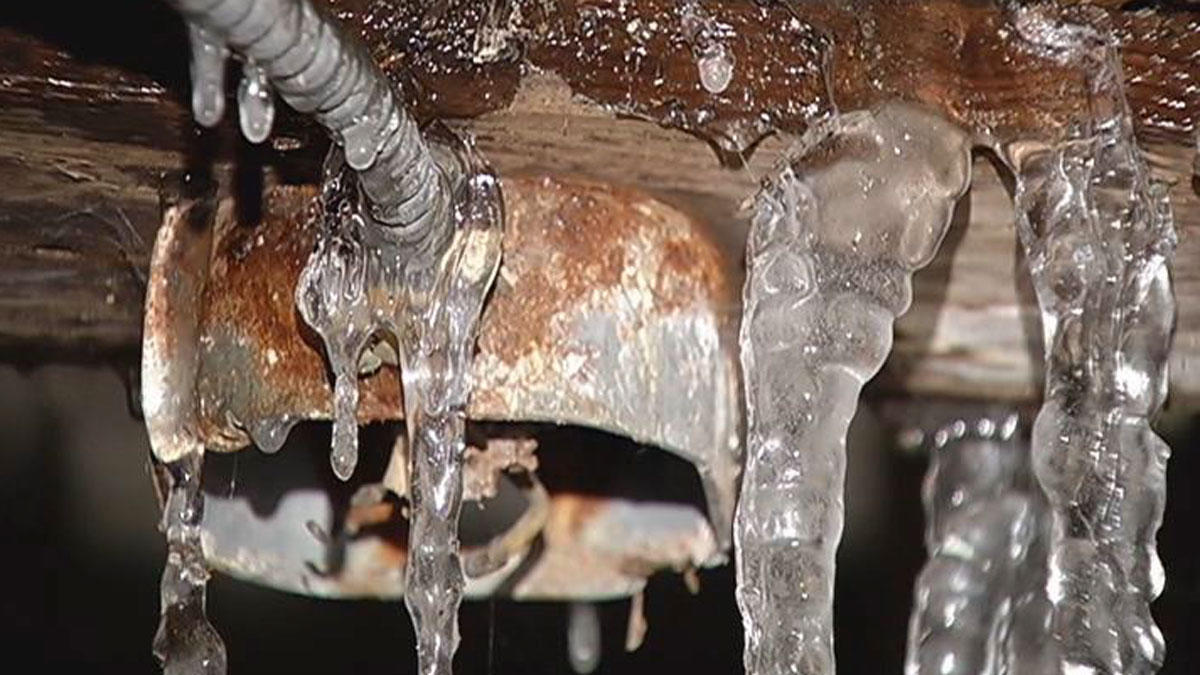In this article further down you can discover a good deal of good quality guidance pertaining to 6 Ways to Prevent Frozen Pipes.

Winter can wreak havoc on your plumbing, particularly by freezing pipelines. Below's just how to prevent it from occurring and what to do if it does.
Intro
As temperatures drop, the risk of frozen pipes boosts, potentially resulting in expensive repair work and water damage. Comprehending exactly how to avoid frozen pipes is essential for property owners in cool environments.
Recognizing Icy Pipes
What causes pipelines to ice up?
Pipes freeze when revealed to temperature levels listed below 32 ° F (0 ° C) for prolonged periods. As water inside the pipelines ices up, it expands, taxing the pipeline walls and potentially creating them to rupture.
Risks and damages
Icy pipes can lead to water interruptions, home damage, and costly repair services. Burst pipes can flooding homes and trigger considerable structural damages.
Signs of Frozen Pipeline
Recognizing icy pipelines early can prevent them from bursting.
How to recognize frozen pipelines
Try to find decreased water circulation from faucets, uncommon smells or noises from pipelines, and noticeable frost on subjected pipelines.
Prevention Tips
Shielding susceptible pipelines
Cover pipes in insulation sleeves or use warm tape to shield them from freezing temperatures. Concentrate on pipelines in unheated or exterior areas of the home.
Home heating strategies
Maintain interior rooms sufficiently heated up, especially areas with pipes. Open up cupboard doors to allow warm air to flow around pipelines under sinks.
Securing Outside Plumbing
Garden tubes and exterior taps
Separate and drain garden tubes prior to winter months. Mount frost-proof faucets or cover exterior taps with shielded caps.
What to Do If Your Pipes Freeze
Immediate activities to take
If you presume frozen pipelines, keep taps available to alleviate pressure as the ice melts. Utilize a hairdryer or towels soaked in warm water to thaw pipes slowly.
Long-Term Solutions
Architectural modifications
Take into consideration rerouting pipes away from outside wall surfaces or unheated locations. Add extra insulation to attics, basements, and crawl spaces.
Upgrading insulation
Invest in premium insulation for pipes, attic rooms, and walls. Correct insulation assists keep consistent temperature levels and reduces the danger of frozen pipes.
Verdict
Avoiding frozen pipelines calls for aggressive measures and quick actions. By recognizing the reasons, indications, and safety nets, home owners can shield their pipes throughout winter.
5 Ways to Prevent Frozen Pipes
Drain Outdoor Faucets and Disconnect Hoses
First, close the shut-off valve that controls the flow of water in the pipe to your outdoor faucet. Then, head outside to disconnect and drain your hose and open the outdoor faucet to allow the water to completely drain out of the line. Turn off the faucet when done. Finally, head back to the shut-off valve and drain the remaining water inside the pipe into a bucket or container. Additionally, if you have a home irrigation system, you should consider hiring an expert to clear the system of water each year.
Insulate Pipes
One of the best and most cost-effective methods for preventing frozen water pipes is to wrap your pipes with insulation. This is especially important for areas in your home that aren’t exposed to heat, such as an attic. We suggest using foam sleeves, which can typically be found at your local hardware store.
Keep Heat Running at 65
Your pipes are located inside your walls, and the temperature there is much colder than the rest of the house. To prevent your pipes from freezing, The Insurance Information Institute suggests that you keep your home heated to at least 65 degrees, even when traveling. You may want to invest in smart devices that can keep an eye on the temperature in your home while you’re away.
Leave Water Dripping
Moving water — even a small trickle — can prevent ice from forming inside your pipes. When freezing temps are imminent, start a drip of water from all faucets that serve exposed pipes. Leaving a few faucets running will also help relieve pressure inside the pipes and help prevent a rupture if the water inside freezes.
Open Cupboard Doors
Warm your kitchen and bathroom pipes by opening cupboards and vanities. You should also leave your interior doors ajar to help warm air circulate evenly throughout your home.

I ran across that content on Helpful Tips to Prevent Frozen Pipes this Winter while doing a search on the internet. Are you aware of somebody who is in to the subject? Be sure share it. I take joy in reading our article about How to prepare your home plumbing for winter weather.
Call Today